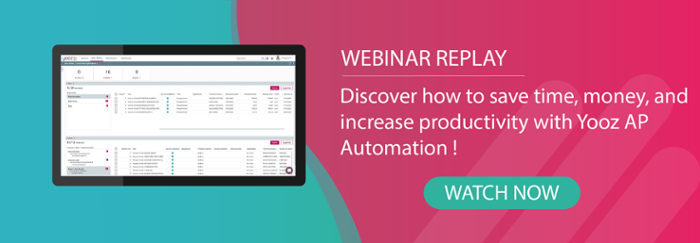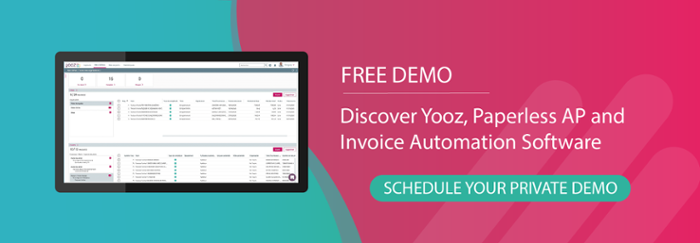Digital transformation of finance and accounting functions has become a major challenge for organizations of all kinds.
It represents a fundamental shift to digitize a company’s business processes, its culture and the customer experiences, making data or bits a valuable input and output. It’s not a passing tech-driven fad, but a key driver how even small and medium-size businesses will be able to stay competitive.
According to Gartner, the term “digital” in the early 2000s only ranked among the Top 5 priorities for CEOs in 2.1% of the companies surveyed, whereas today it is a priority for one out of every five companies. The proportion of companies that have a digital strategy rose from 62% in 2018 to 82% in 2019, confirms Gartner, which considers that 90% of companies today have already been confronted with different types of disruption in their business models.
Why Digitalize Accounting and Finance Departments?
In a survey by PricewaterhouseCoopers (PwC) on 2020 priorities for financial directors, digitalizing the finance and accounting functions for organizations have been a leading consideration since 2018 and will remain so for the next three years. According to the study, the goal is to “make relevant, high-quality, and meaningful data available to better anticipate and facilitate decision-making. Companies need open systems that can collect non-financial and other types of data”.
Digital transformation and its assortment of new technologies therefore represents a major opportunity for financial decision-makers. That includes digitalization as a priority, but also Big Data, analytics, Robotic Process Automation (RPA), not to mention artificial intelligence and virtual assistants. All these technologies have a transversal and universal goal, which is to valorize data.
Benefits to Digital Transformation
Done right, digital transformation enables all employees, from top managers down to factory workers, field workers and clerks, to more easily gather, share and analyze data in order to service more customers better and have the relevant information at their fingertips to keep learning from each transaction and making better decisions. It also means your customers suddenly have new ways to consume products or services and have the option to engage in an ongoing dialogue with their vendors.
Under the hood, digital transformation allows companies to automate many manual processes and often run them virtually hands-free. Tasks that were previously done manually and where time-consuming and tedious are now handled by intelligent software tools that are, to varying degrees, context-aware. Why not have a chatbot start off a conversation with a supplier or handle an incoming customer query, point them to existing answers to their questions and only escalate those contacts that require a human touch?
Digitalizing Accounting and Finance Departments
Financial data is no exception to the trend of information overproduction, notably because regulatory obligations require more information to be stored for longer periods of time, and because business intelligence and visualization tools incite organizations to increase their use of dashboards. Also, digital transformation speeds up electronic processing and increases the volume of digital data. Data remains at the heart of the process, such as invoices in electronic solutions, structured data in predictive models, labels for classifying accounting entries, product references in ERP systems, and more.
According to PwC, people in the most efficient finance departments are already spending 75% of their time analyzing data. A report by Dresner Advisory Services published in late 2019, shows that 40% of finance departments intend to acquire Big Data solutions in 2020, notably as a way to benefit from information in real-time, align their work with management needs, and make data more reliable.
Beyond the analytics and data visualization solutions required by this new need, technology investment concentrates accordingly on a dual objective: making data more reliable and eliminating as many tasks as possible with low added value. Document digitalization and process automation have emerged as the tools of choice to address those points.
How Can You Digitalize the Finance Function?
Companies and their accounting and finance departments are clearly going to continue investing massively in digital technologies, pressed by upper management. According to IDC, European companies are going to dedicate 271 billion dollars to their digital transformation in 2020.
Even though these companies may have some degree of maturity in this area, and the effort continues to move forward, there is still enormous margin for progression: one out of every two companies is still at the thinking or would-be-good-to-have stage, Gartner is confident that 67% of corporate boards will also place digital technologies and disruption at the top of their list of challenges, ahead of acquiring skills, handling regulatory issues, growth, and profitability.
Two thirds of all CFOs feel that their organization’s future success depends on proper alignment with technologies. Similarly, in its 2020 study on finance departments, the human resource consulting firm Robert Half reveals that the top priority of CFOs is to keep up with technological progress, even more so than with regulatory issues. These priorities were the opposite in 2017: “Process automation, implementing digital solutions for corporate departments, and the need to limit management costs and risks are issues of concern for finance professionals”.
To address these issues, finance decision-makers, accountants, and auditors today have four very different roles to play:
- they must be sprinters, as digital transformation is a continuously accelerating process.
- they must be marathon runners, as they need to be able to keep up the pace with respect to data flows and multiple work projects arising from digital transformation.
- they must be coaches, guiding staff and business units.
- they must be referees, confirming and securing decisions.
It is nothing less than mission impossible for financial decision-makers to handle all these different facets alone. Fortunately, technologies are here to facilitate and accelerate the transition to CFO 4.0. Compared to their historical role as financial decision-makers, CFOs move from a support function towards that of a value creator with predominantly technical expertise to optimize more assertive leadership within the value chain. According to the PWC study, 25% of financial directors become leaders in digital transformation thanks to their position at the convergence of all corporate functions.
In addition to the four roles mentioned earlier for CFOs, there are also five other core principles. CFOs:
- drive performance
- innovate
- stay connected
- communicate
- create value.
A range of technologies applies to each of these missions. Steering process and organizational performance leverages an increasing number of Cloud applications and, of course, digitalization technologies.
Digitalizing Account Payable and Invoicing Processing Workflows
Companies that have begun to automate or digitize Accounts Payable and invoice processing workflow report a significant effect, not only on the bottom line, but to their business as a whole. An Accounts Payable automation platform like Yooz is a cost-effective way to shift the Accounts Payable function quickly and painlessly into the cloud. As a result, you can reduce cycle times, avoid late fees and lock in discounts. Accounts Payable automation also makes handling invoices and purchase orders more accurate. Searching a digital haystack, for example, requires one click and takes seconds.
As soon as software equipped with machine-learning algorithms can read and understand invoices, Accounts Payable staff have their hands free to focus on the real value-add tasks such as dealing with exceptions. Even better, platforms like Yooz get better over time at recognizing particular documents and how their data should be handled -- creating even more opportunities for employees to do the things that humans are truly good at, for instance nurturing your company’s business relationships with suppliers, partners or franchisees. Once a business partner has discovered the power and ease of use of a state-of-the art vendor portal to submit invoices, receive electronic payments and get most of their questions answered, they will never want to go back to faxing or stuffing envelopes.
Digitalized Accounts Payable is Here to Stay
Finally, going digital is only growing in popularity as more and more companies prepare for a post-COVID19 world in which a fair amount of their team will work remotely. They will need to access data and documents wherever they are, connecting the dots with colleagues who are no longer down the hall. In some cases, that might mean approving an invoice on a tablet from your kitchen counter.
And this is probably the most important thing about embracing digital transformation with Accounts Payable workflow automation. There is no turning back. Cloud-based Accounts Payable automation systems have already proven their value. They make everyone’s job easier, they save time and money, and they continuously improve. From that perspective, digital transformation is ushering in a lasting change in work and company culture as well, giving us more flexibility and a flavor of what it’s like to experiment with powerful tools such as automating accounts payable and invoice payments with Yooz.
FAQs
How does Yooz support accounting digital transformation initiatives within organizations?
What are the key benefits of integrating AP automation solution into accounting digital transformation strategies?
How does Yooz ensure compliance and security in the context of accounting digital transformation?
Can Yooz's AP automation solution adapt to the evolving needs and technologies associated with accounting digital transformation?







